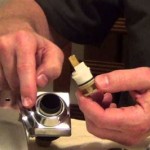How to Paint a Fiberglass Bathtub Yourself
Painting a fiberglass bathtub can be a cost-effective alternative to replacement when dealing with cosmetic issues like discoloration, staining, or superficial damage. The process, while manageable for a determined homeowner, requires meticulous preparation and the use of specialized products to ensure a durable and aesthetically pleasing finish. A poorly executed paint job can result in peeling, chipping, and a generally unsatisfactory outcome, making careful attention to detail paramount. The following guide provides a comprehensive breakdown of the steps involved in painting a fiberglass bathtub.The success of a fiberglass bathtub painting project hinges on a combination of proper surface preparation, the selection of appropriate materials, and the application of those materials in a controlled and methodical manner. Skipping steps, cutting corners, or using substandard products can all compromise the final result. This article aims to provide a clear, step-by-step guide to achieving a professional-looking finish that will extend the life and improve the appearance of the bathtub.
Before beginning any work, it is critical to understand the inherent properties of fiberglass. Fiberglass is a composite material made of glass fibers embedded in a resin matrix. This construction makes it strong and relatively lightweight, but also presents challenges when painting. The smooth, non-porous surface of fiberglass means that paint will not adhere readily without proper preparation. Therefore, the sanding and priming stages are particularly crucial.
Key Point 1: Thorough Surface Preparation is Paramount
The first, and arguably most important, step in painting a fiberglass bathtub is thorough surface preparation. This involves cleaning, sanding, repairing any damage, and masking off the surrounding area. Each of these substeps plays a critical role in ensuring a successful and long-lasting paint job.
Cleaning: Begin by thoroughly cleaning the bathtub with a strong bathroom cleaner designed to remove soap scum, mildew, and mineral deposits. Scrub the entire surface vigorously, paying particular attention to areas with visible staining. Rinse thoroughly with clean water and allow the bathtub to dry completely. Following the initial cleaning, use a dedicated degreaser to remove any residual oils or waxes that may be present. These residues can interfere with the adhesion of the primer and paint. Again, rinse thoroughly and allow to dry.
Sanding: Once the bathtub is completely clean and dry, the next step is to sand the surface. This process creates a slightly rough texture that provides a "key" for the primer to adhere to. Use a medium-grit sandpaper (around 220 grit) for the initial sanding. Sand the entire surface of the bathtub, using consistent pressure and a circular motion. The goal is not to remove the existing finish completely, but rather to scuff it up enough to provide adequate adhesion. After the initial sanding, use a finer-grit sandpaper (around 400 grit) to smooth out any rough spots and remove any sanding marks left by the coarser sandpaper. Remove all sanding dust with a tack cloth or a damp cloth. Ensure that no residue remains, as this can also affect the adhesion of the primer.
Repairing Damage: Inspect the bathtub for any cracks, chips, or other damage. These imperfections must be repaired before painting, as they will become more noticeable after the new finish is applied. Use a fiberglass repair kit, following the manufacturer's instructions carefully. These kits typically contain a resin and hardener that, when mixed, create a strong and durable filler. Apply the filler to the damaged areas, allow it to cure completely, and then sand it smooth, blending it seamlessly with the surrounding surface. It is important to ensure the repaired areas are completely flush with the original surface to avoid visible imperfections after painting.
Masking: Protect the surrounding areas from overspray by carefully masking off everything that is not to be painted. This includes the walls, fixtures, drains, and any other exposed surfaces. Use painter's tape and plastic sheeting or drop cloths to create a barrier. Ensure that the tape is firmly adhered to the surface to prevent paint from seeping underneath. Pay particular attention to the edges of the bathtub, as this is where overspray is most likely to occur. Take your time with this step, as a well-masked area will save you time and effort in the long run.
Key Point 2: Selecting the Right Materials
Choosing the correct primer and paint is crucial for achieving a durable and long-lasting finish. Not all paints are created equal, and using the wrong type of paint can result in peeling, chipping, and discoloration. Specifically formulated epoxy or acrylic urethane paints specifically designed for fiberglass surfaces are recommended. These paints offer superior adhesion, durability, and resistance to water and chemicals.
Primer: A high-quality epoxy primer is essential for ensuring proper adhesion of the paint to the fiberglass surface. Epoxy primers are known for their excellent bonding properties and their ability to create a hard, durable base coat. Look for a primer that is specifically designed for use on fiberglass and that is compatible with the paint you have chosen. Apply the primer in thin, even coats, following the manufacturer's instructions. Allow the primer to dry completely before proceeding to the next step. Lightly sand the primed surface with fine-grit sandpaper (around 400 grit) to create a smooth surface for the paint to adhere to.
Paint: Choose an epoxy or acrylic urethane paint that is specifically formulated for use on bathtubs and showers. These paints are designed to withstand the harsh conditions of a bathroom environment, including high humidity, frequent water exposure, and the use of cleaning chemicals. Consider the desired finish when selecting the paint. Options include gloss, semi-gloss, and matte. Gloss finishes are more durable and easier to clean, but they can also show imperfections more readily. Semi-gloss finishes offer a good balance between durability and aesthetics. Matte finishes are less reflective and can hide imperfections better, but they are also more porous and may require more frequent cleaning. Be sure the paint is specifically designed for fiberglass.
Application Tools: The right application tools are just as important as the primer and paint themselves. Use high-quality brushes, rollers, and spray equipment to achieve a smooth and even finish. For small areas and tight corners, a brush is the best option. For larger, flat surfaces, a roller or sprayer is more efficient. When using a roller, choose one with a smooth nap to minimize texture. When using a sprayer, ensure that it is properly calibrated and that you are using the correct tip size for the paint you have chosen. A poorly calibrated sprayer can result in an uneven finish and wasted paint.
Safety Equipment: Always wear appropriate safety equipment when painting, including a respirator, gloves, and eye protection. The fumes from paints and primers can be harmful, and it is important to protect yourself from exposure. Ensure that the work area is well-ventilated to minimize the concentration of fumes. Read and follow the manufacturer's instructions for all products used, including safety precautions and disposal guidelines.
Key Point 3: Precise Application and Curing
The application of the primer and paint should be done with care and precision to ensure a smooth and even finish. Rushing this step or applying the paint too thickly can result in runs, drips, and an uneven texture. Proper curing is also essential for achieving a durable and long-lasting finish.
Primer Application: Apply the primer in thin, even coats, using a brush, roller, or sprayer. Avoid applying the primer too thickly, as this can lead to runs and drips. Allow each coat of primer to dry completely before applying the next. Sand lightly between coats with fine-grit sandpaper (around 400 grit) to create a smooth surface for the paint to adhere to. The goal is to build up a uniform base coat that will provide a solid foundation for the paint.
Paint Application: Apply the paint in thin, even coats, using a brush, roller, or sprayer. As with the primer, avoid applying the paint too thickly. Multiple thin coats are better than one thick coat. Allow each coat of paint to dry completely before applying the next. Sand lightly between coats with fine-grit sandpaper (around 600 grit) to remove any imperfections and create a smooth surface. The number of coats required will depend on the type of paint used and the desired finish. Typically, two to three coats are sufficient. Ensure the coats are even and consistent.
Curing: Once the final coat of paint has been applied, allow it to cure completely before using the bathtub. Curing is the process by which the paint hardens and bonds to the surface. The curing time will vary depending on the type of paint used and the environmental conditions. Refer to the manufacturer's instructions for the recommended curing time. Generally, it is best to wait at least 24 to 72 hours before using the bathtub. Avoid exposing the painted surface to water or cleaning chemicals during the curing process. Proper curing is essential for achieving a durable and long-lasting finish. Rushing this stage can cause problems down the line.
Post-Painting Care: After the paint has cured completely, remove the masking tape and plastic sheeting. Be careful not to damage the new paint finish when removing the tape. Clean the bathtub with a mild soap and water. Avoid using abrasive cleaners or harsh chemicals, as these can damage the paint. Inspect the painted surface for any imperfections or missed spots. Touch up any areas as needed. With proper care, a painted fiberglass bathtub can provide years of use and enjoyment.

How To Paint A Bathtub Yourself The Nifty Nester

Super Simple How To Paint A Bathtub

How To Paint A Tub Shower Surround Before After Fiberglass Refinishing Diy Power Couple

Super Simple How To Paint A Bathtub

Diy Painted Bathtub Follow Up Your Questions Answered Addicted 2 Decorating

How To Paint A Tub With Rustoleum What Not Do

How To Paint A Shower Or Bathtub

How To Refinish Your Bathtub For 50

Painting A Plastic Fibreglass Tub And Surround Using Marine Paint

Bathroom Makeover Day 11 How To Paint A Bathtub Addicted 2 Decorating








